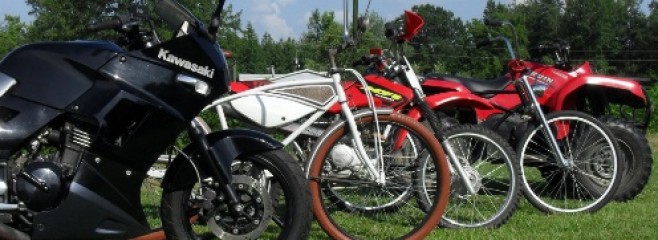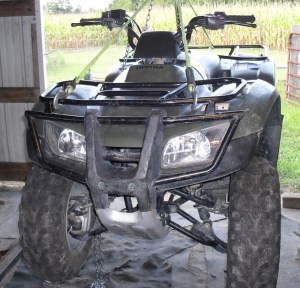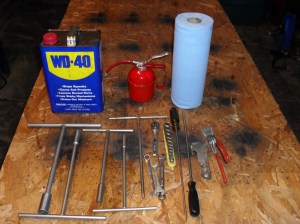Who is looking for a way to safely mount their smartphone to the handlebars of their motorcycle, bicycle or atv? Initially when I first decided to add navigation to my motorcycle, the first thought was to find a mount for the Garmin Nuvi that I use in the old van, but quickly realized that my smartphone has some seriously good navigation apps installed on it and has the added advantage of always being with me. Keeping in mind the price of my phone and the importance of the data that it contains, any mount purchase would need to be secure, strong, & waterproof, with excellent vibration & impact resistance. After a quick bit of internet research I decided to try one of the Buybits Ultimate Addons mounts, and placed an order with Amazon. At $69.99 plus shipping from the U.K. this is not a cheap product (although it is not the most expensive either, price as of 8-9-14).
As usual my order arrived quickly and was well packaged with no transit damage!
Opening it up and viewing the contents I found the protective case, handlebar mount & power cord. Please note that if your motorcycle or atv is not equipped with a DIN (Hella) style power outlet you will need to install one in order to use the charger, here’s a link to the item I used.
The protective case is a very impressive design, thick plastic with a generous amount of rubber inside both to cushion the phone & seal out the water. Please note this case is not for weight weenies, but if you don’t mind carrying around a few extra ounces in order to keep your device safe & dry it is worth it. A great and pleasant surprise to me was to find out that there was a viewport for the camera, the touch screen worked well, and the case is engineered well enough that all operation functions of the phone could be controlled just as if the phone were not in the case at all.
The handlebar mount itself had me worried a little bit after seeing the relatively bombproof looking case that attaches to it, the mount looked small and while not flimsy looking it seemed like it should be larger and heavier looking to hold up this big case & my oversize $500 phone. In engineering we all know that well designed products can be much stronger than they look, but the barbarian living in my head doesn’t always see that, so for my initial testing I strapped it to the rattliest, roughest riding pile of junk in the shed, a Baja MB165 minibike. My minibike is a frightening concoction, of assorted used parts loosely assembled together and then blessed (cursed?) with a couple of speed enhancing modifications including a CVT drive.
After bouncing around a little while around the field, up & down the dirt road a time or two, and at least 50 laps around the house it didn’t fall off, or even come loose. I even shot a short video that I didn’t post any where but if enough of you want to see it I can add it to this page later. An S4 in this mount actually makes a decent video if you can get the orientation right. This was more than enough of a test to convince me the mount was going to hold up just fine. So now it was time to check the water resistance of the case so I fastened it to the front rack of this ATV and took it out to play in the rain, at night.
After all of this I opened up the case and found that my phone was completely dry and safe, and while I still would not actually submerge it in pond or anything like that I am now convinced that this case properly installed and closed will keep your phone dry and safe during any rain storm you are going to encounter out on the road or trail. After all the Brits who sell this product obviously know all about riding in the rain.
It is a large bulky case, and yes in bright sunlight the screen can be hard to see, but if any of you have a touch screen phone that is easy to see in direct sunlight, I want to see it, because at this time such a phone does not exist. The charger is easy to install, but if you are cutting off the plug and hard-wiring it to your vehicle be sure to connect it to a switched circuit or install a separate power switch as the charger has an LED that is always on whenever power is present. I just installed a DIN outlet so that I could unplug it. It would have been nice if the mount were taller and had more adjustment for position. They do make one one but I admit to being a cheapskate especially when dealing with products that I am not familiar with.
Here’s a shot of it attached to the bars of my main ride with navigation open, ready for me to go get lost & then find my way back home. Having used this mounting and charging set up for a few hundred miles on four different vehicles I am happy with it.
Bottom Line: The Ultimate Addons Mounting System for Phones is well worth the cost, I’d recommend this product to anyone.
Peace Y’all

















































